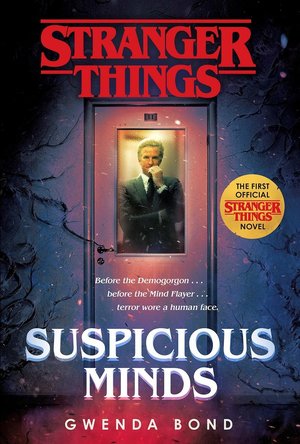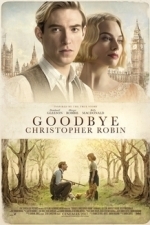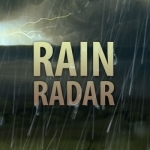
RainRadarAU
Weather and Navigation
App
Ever find yourself wandering around Australia somewhere and seeing those grey clouds on the horizon...

Don't Starve: Pocket Edition
Games
App
***NOTE: Don't Starve requires iOS 8 and at least an iPhone 5, iPad 3, or iPad mini 2. Due to memory...

The Heroes of Three Kingdoms
Games
App
★☆ LIMITED TIME OFFER : SPECIAL PRICE!!! ☆★ Appreciate customers event for only limited...

Little Briar Rose
Games and Stickers
App
A stained glass-styled adventure inspired by Sleeping Beauty. «Little Briar Rose is one of the...
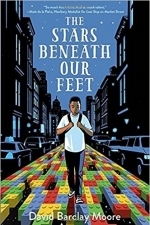
Stars Beneath Our Feet
Book
A boy tries to steer a safe path through the projects in Harlem in the wake of his brother's death...
children

Crazy Cake Swap
Games
App
Swap cakes in a crazy match-3 adventure starring YOU and YOUR friends! Escape to a crazy world where...
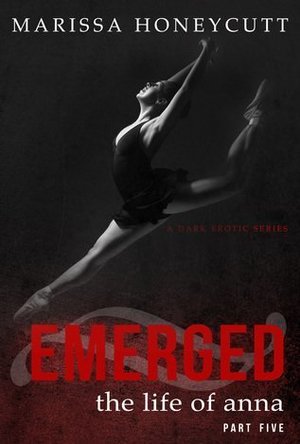
Emerged (The Life of Anna #5)
Book
Anna has escaped from Devin. Now she must learn what it is to live without a master. Yet Devin will...

No Shame (No Shame #4)
Book
(This is NOT a stand alone novel. See end of this description for details) Brad feels nothing but...
M_M Contemporary Romance
Hadley (567 KP) rated Stranger Things: Suspicious Minds in Books
Jun 10, 2019
Although the series has more than one book, and no end in sight, Bond was only chosen to do this novel. 'Suspicious Minds' is categorized under Young Adult books, but with the heavy Vietnam content, it's not considered that many young adults today can actually relate with this story or even understand the devastating effects of a looming draft hanging over the heads of young men throughout America in the 1960's. But Bond does a wonderful job in relating the emotional state of this era through our main character, Terry. Another subject that Bond does a fantastic job of explaining in 'Suspicious Minds' is the taboo of being a pregnant, unwed mother in this era, something that seems to be making headlines again in the States nearly 60 years later.
Bond shows us a young Dr. Martin Brenner, with neatly styled brown hair and an almost unlined face, as well as a more lively Terry Ives (which only season 2 has shown a very short flashback sequence of Terry being mobile before her dreaded consequence from being associated with the human experiments). We find out that the reason Terry volunteered for the experiment is due to her father's service in WWII, and wanting to make the world a better place. Bond brings in the other important characters, who also volunteered for the experiments, quickly bonding the four as friends for life.
As far as characters go, these four are written very well. Although Terry is the main character of 'Suspicious Minds,' we get to see from the viewpoints of all people, including Brenner. Bond gives the reader a short background on what LSD is and where it came from when the time comes for the experiments to begin. Brenner doesn't really explain why he gives LSD to the volunteers, but only that it is part of a secret experiment. Even when Terry is placed in a sensory deprivation tank, he doesn't reveal anything to her, and Bond does a great job of keeping the characters enough in the grey area of knowing that it's believable. Even at one point, when Terry begins to suspect something strange from the experiments, she keeps the belief that whatever is going on at Hawkins Laboratory must be important: " 'But you can't see it's important?' Terry leaned in close, and they kept their voices down as other students walked past. 'They just called up the school and told them to give me Thursdays off and I'm getting credit for it? They're tying our grades to doing this. And no one asked any questions. They just agreed. I have to keep going.' " Bond eloquently keeps the mystery going.
This mystery is even interesting to those who know what happens in the end. In 'Stranger Things,' Terry is introduced as a comatose woman in a rocking chair- who happens to be Eleven's mother. We have never met Gloria, Alice or Ken. The three become very close to Terry, and they all somehow escape from Brenner's grasp, but they also end up joining in Terry's pursuit of getting Eleven/Jane back to her mother. Fans of the show might be left asking what happened to these three enjoyable characters? I haven't seen any plans for a part two of this story, so we may be left not knowing what happened or if the three are even still alive today (in the Stranger Things' era). Even more enjoyable is the random use of J.R.R. Tolkien's 'The Lord of the Rings,' where in one scene, Alice and Terry decide to name their small group 'The Fellowship of the Lab.' Any veteran reader will be happy to see a classic brought up in a newer book of today.
And also of interest, fans will recognize a little girl who is frequent throughout the story: Eight a.k.a. Kali. We never get to see through Kali's perspective, but the reader does get to see the multitude of her abilities. For instance, Kali is able to scare personnel in the lab by causing the hallucination of tidal waves inside the building, only to stop when Brenner (or Papa to her) gives her her favorite sweet: Hostess cakes. Other than that, Kali is like any child; she throws tantrums and rebels from her Papa, sometimes to the laughter of the reader.
One point, Terry even meets with Kali in her LSD induced state: " Terry shook her head. 'There can be. He's just a man. He can't know everything.' She paused. 'Does he hurt you? Papa?' Kali frowned, but she didn't answer. 'If he does... I can help you.' Terry had to make her understand. The little girl shook her head. 'I don't think so. I might be able to help you, though.' A field of yellow sunflowers grew up around them. A rainbow arcing over the golden tops." Terry, understandably, begins to scheme about how they can help Kali to escape the lab.
Bond does a great job of transitioning between Terry's point of view to the other characters' viewpoints. We get a young woman named Gloria, who has a secret obsession with comic books (especially X-Men). A hippie-looking man named Ken, who claims he is psychic, but just happens to have a lot of hunches that come true. And last, but not least, another young woman named Alice, who shows up in grease covered overalls and curly black hair, explaining that she works for her uncle's garage and that she loves machines. These three are delightful to read about, and the story would be boring without them.
This book was the perfect novel to answer questions fans may have had about Eleven's mother. Bond writes smoothly and easily enough that you may find yourself wanting to read just one more page before setting the book down for the evening. She drags you into the world of the 1960's and helps young readers to feel the emotional time that it was for women like Terry. But with only a few inconsistencies here and there, 'Suspicious Minds' leaves us wanting more. If you are a fan of 'Stranger Things,' I say that this is a must-read! Highly recommend!
Lee (2222 KP) rated Goodbye Christopher Robin (2017) in Movies
Oct 2, 2017
We begin with a brief scene of despair following the receipt of a telegram at the Milne home in 1941. Before we have time to fully understand what's going on, we're whisked back to World War I where A.A. Milne (Domhnall Gleeson) is fighting in the trenches. Following the war, Milne (or "Blue" to his friends) tries to live out a normal life in London, working as a writer with wife Daphne (Margot Robbie) and their young son Christopher Robin. Unfortunately though, Milne suffers from post-traumatic stress disorder, meaning that the bright lights and loud noises of London regularly take him back to the horrors of World War I and begin to effect his life and his work. Deciding to move his family to a farmhouse in Sussex, Milne hopes that the peace and quiet of the countryside will allow him to concentrate on getting back into his writing.
As he struggles to write the book he wants to write, Daphne heads back to London, promising only to return when he begins writing again. At the same time, beloved nanny Olive (Kelly Macdonald) takes time off to look after her mother, meaning that Milne must finally spend some time with Christopher Robin, getting to know his son and enjoying time together in the large woods surrounding their home. It's a slow process though, with the occasional PTSD trigger affecting the already strained father-son relationship, but they soon begin fleshing out stories, characters and habitats for what will become Winnie the Pooh and friends. When Milne invites his friend E.H. Shepherd down to start sketching the woodland and Christopher Robin at play, things really begin to take shape and it's not long before Milne has published his Winnie the Pooh stories. And they're an instant hit.
To the disappoint of A.A. Milne, much of the books attention is focused towards Christopher Robin who is immediately thrust into the limelight. Forced to endure endless photo-shoots and interviews, participating in a tea party with children who have won a competition and being constantly hounded by the press. His parents revel in the success thought, not really acknowledging the effect it's all having on their young son while they swan off to parties and holidays leaving the nanny to look after Christopher Robin and his increasingly busy schedule. Even a telephone call home from Milne to Christopher Robin to see how he is turns out to be part of a radio broadcast. He feels his life isn't his own anymore, and that Christopher Robin is just a character in a book. Even when he heads off to boarding school, he cannot escape the curse of Christopher Robin and is constantly bullied because of it.
It's thanks to the amazing cast, particularly Gleeson and newcomer Will Tilston, that all of this works so well. Building to a highly emotional ending (yeah, I cried!), Goodbye Christopher Robin is a wonderfully touching story. Emotional and hugely enjoyable.
